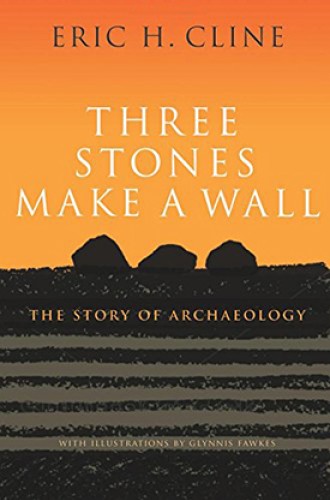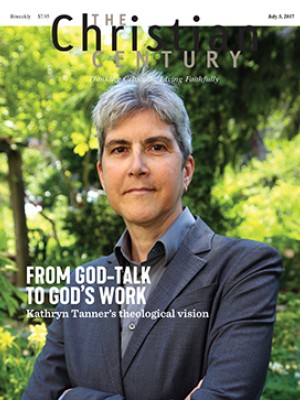An evangelist for archaeology
We can’t all be Indiana Jones, but now we can read about why archaeology matters.
A good story involves mystery and adventure and is seasoned with comic touches. The popular quartet (soon to be quintet) of Indiana Jones films succeeds largely because it follows this formula, but readers who prefer the real-life equivalent should be equally pleased with Eric Cline’s book.
It’s a compendium of fascinating stories: stories of how hominids evolved into humans, and how humans first began making art; stories of long-ago peoples and communities, from Neolithic Jericho to colonial Jamestown; stories of quirky, sloppy, sometimes dishonest early excavators like Giovanni Belzoni and Heinrich Schliemann. Tales of early professional archaeologists, like Sir Arthur Evans, whose slow, meticulous work revealed amazing facts about the past, even as they too made their share of mistakes; accounts of pioneering scholars like George Bass, “father of underwater archaeology.” Stories drawn from Cline’s long and distinguished career which includes teaching anthropology and classics at George Washington University.
Read our latest issue or browse back issues.
While Cline insists that “most archaeologists are nothing like Indiana Jones,” the stories in his book hold no less excitement than Jones’s make-believe adventures. Consider this description of “what is known in archaeological surveying terms as walking a transect”:
When I say walking in a straight line, I mean quite literally walking in a straight line, regardless of whether that meant fording a stream, rappelling, or falling down a small cliff, or facing down a bull or a local farmer with a shotgun who didn’t want us on the land. All those things happened, either to me or to other people on our team [at Pylos, Greece, in the 1990s], but what was much more frequent was ripping our legs to shreds, even through our pants, because we had to walk right through the underbrush. . . . That stuff can be nasty.
Farmers with shotguns are hardly the biggest threat to today’s archaeologists and the treasures they strive to recover, interpret, and protect. Religious zealots who smash cuneiform tablets and blow up ancient shrines, looters who don’t hesitate to wreck an entire site for a hoped-for bit of gold, and amateurs who claim to know what “really” happened in ages past: all of these receive due censure in Cline’s book. But censure alone won’t stop them, as Cline knows. Unlike Indiana Jones, he cannot end triumphantly, with foes vanquished and threats dissolved. What he can do is help readers to glimpse the complex and fascinating world of archaeology and understand why it matters, or should matter.
As a former archaeologist, I find the breadth and depth of Cline’s knowledge extraordinary. Were I part of his target audience, however, I might wonder just how experts like Cline differentiate between “pseudo-archaeologists” and reputable colleagues. The fact that Erich von Däniken belongs to the “pseudo” group is obvious enough. I have yet to meet a college freshman who believes von Däniken’s nonsense about aliens building the pyramids or the Nazca Lines. Yet surely there are borderline cases of scholars with fine education who hold eccentric ideas, and while the great majority of eccentric notions and claims (e.g., finding Atlantis in Spain) will someday be abandoned, on occasion eccentrics turn out to be right. A more nuanced discussion of this matter could have been worthwhile.
Readers also deserve to know why Cline contradicts himself with respect to Herodotus, the world’s first pseudo-historian. He says that Herodotus was poorly informed on Egyptian customs like mummification but then adds: “We know quite a bit about mummification, in part because we have a rather detailed description from Herodotus.” Admitting that even experts sometimes rely on flawed sources would be fitting.
Finally, his neglect of cultural riches from the Indian subcontinent (Mohenjo-daro at least should be mentioned) and the great sub-Saharan African civilizations (e.g., Great Zimbabwe) will disappoint readers wishing to learn more about our shared global heritage.
Cline’s decision to stress the positive aspects of this heritage while somewhat downplaying the negatives (i.e., legacies of cruelty and violence, on which archaeology also sheds light—and which it is our moral duty to remember) is understandable given his mission.
I hope that the material I have included in this book will remind us all of where we have come from and the fascination that it holds and will encourage a wide public audience to help protect our inheritance before it is too late. Not all readers will have the time or freedom to join an archaeological dig, but everyone can raise their voices in support of the archaeological process and our heritage.
That people worldwide have ancestors of whom they can be proud, and whose achievements they can and must work to honor and preserve, is indeed a message for our time. Cline conveys it with a blend of earnestness and good humor, vivid descriptions, and conversational style. His book deserves to be widely read and its call to action heeded.







